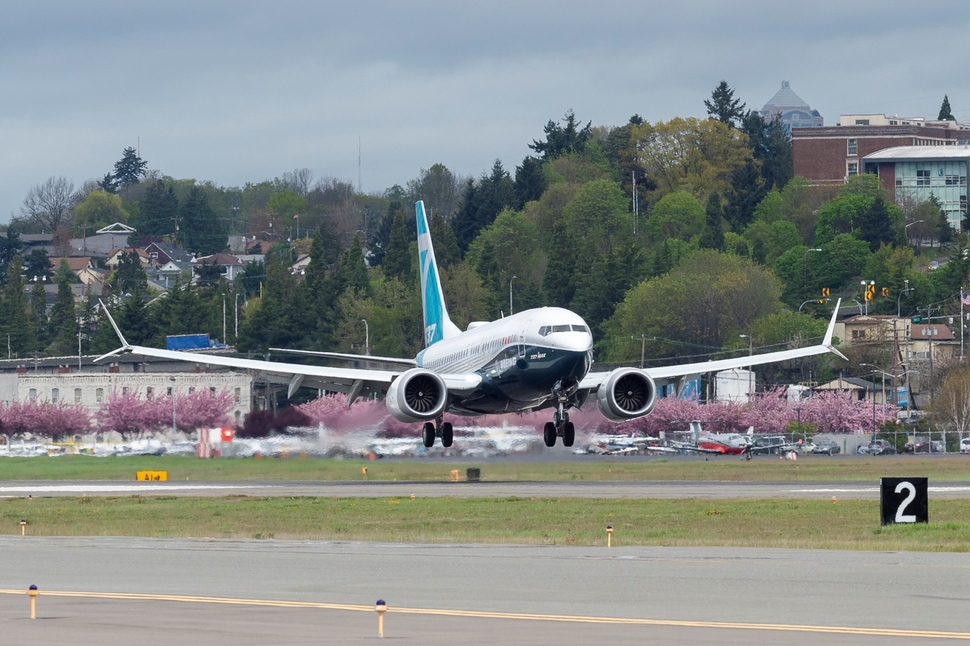Boeing is sharing a proposed computer-based pilot training session with US pilot unions as part of its work to return the 737 Max to service, several sources familiar with Max’s re-certification efforts say.
The computer-based training session reviews the 737 Max’s speed trim system and the manoeuvring characteristics augmentation system (MCAS), which has been identified as among factors contributing to two 737 Max crashes.
Boeing has said it is developing new training, as well as updating the MCAS software, but the Chicago-based company has released few details.
Sources, who decline to be identified, now say Boeing has been sharing the computer training with pilots from unions representing cockpit crew at major US airlines.
The sources indicate that the airframer seeks to solicit feedback and objective input from pilots, and to ensure the aviation community’s involvement in efforts to return the Max to service.
Boeing’s proposed computer-based training can be completed on laptop or tablet computer, and takes as little as 15min, sources say.

Boeing
The new speed trim training course comes in addition to existing computer training for pilots transitioning from the 737NG to the 737 Max. That existing course can be completed in less than 1h, according to one pilot.
Boeing did not immediately respond to a request for comment.
Some US pilots say 15min is enough to understand the speed trim system, noting their familiarity with the 737 Max. Other pilots have, more broadly, expressed frustration for receiving what they describe as minimal training when transitioning from the 737NG to 737 Max.
Three US airlines operated the 737 Max prior to the Federal Aviation Administration’s 13 March grounding: American Airlines, Southwest Airlines and United Airlines.
The three unions representing those company’s pilots decline to comment. The unions include the Southwest Airlines Pilots Association, the Allied Pilots Association, which represents American’s pilots, and the Air Line Pilots Association, which represents United’s cockpit crew.
The FAA will need to sign off on Boeing’s training and its software update, prior to lifting the 737 Max grounding, sources note.
What is still unclear is whether regulators might require training in addition to the computer-based sessions, such as time in a flight simulator.
However, on 25 April, Southwest Airlines chief executive Gary Kelly cast doubt on the possibility of additional simulator training. “We are not hearing that will be a requirement," he said. “Managing the aircraft in a runaway stabiliser scenario is something that we've already covered.”
The day before, Boeing chief executive Dennis Muilenburg said the company had completed 135 test flights with the MCAS update, equating to more than 230h of flight-test time. The airframer has said it completed flight tests of the software update on 17 April.
Last week, an FAA panel released updated pilot training standards that now call for pilots to receive ground training that addresses MCAS “system description, functionality, associated failure conditions and flight crew alerting”.
“These items must be included in initial, upgrade, transition, differences and recurrent training,” the updated report said.
Boeing introduced the speed trim system on the 737NG, then added MCAS to the Max. MCAS ensures the types operate similarly by pushing the Max’s nose down if the system senses it is too high.
MCAS activated prior to the October 2018 crash of a Lion Air 737 Max 8 and the March crash of an Ethiopian Airlines aircraft of the same type. It apparently activated following input of faulty angle-of-attack data, investigators have said.
Boeing’s Muilenburg has taken responsibility for updating MCAS, though the crashes have spurred discussion about pilot training and questions about what role pilots may have played in the crashes.
Both investigations are ongoing.
Source: Cirium Dashboard






















